Various animals and plants have invaded Georgia. A high presence makes it seem like these species are native.
From fish to trees, Georgia is one of the states where many invasive species of the Southeast are found today. Many limit local biodiversity and need management techniques to limit their impact on the ecosystem.
Table of Contents
Invasive Animals of Georgia
The following animals can be found in different areas of the state, with a different types of impact as invasive species.
1. Goldfish
Goldfish (Carassius auratus) is a widespread invasive species in Georgia. These species disturb local habitats and it has been tied to a negative impact on bass.

Goldfish swim on the bottom of lakes and rivers and it does it invasively. It disturbs the bottom of lakes and rivers.
By their activity at the bottom of lakes and rivers, this species releases sediments that contain nutrients. In turn, these nutrients trigger the growth of underwater vegetation such as algae.
Excessive algae make water goldfish live inhabitable to other species. Goldfish are also detrimental by spreading disease.
They can spread various exotic parasites to local populations. Introducing goldfish to most waters in the state is prohibited as a result.
2. Grass Carp

Competition for plant food with local species is one of the main reasons Grass Carp (Ctenopharyngodon idella) are seen as invasive in Georgia.
Disturbing local habitats, these fish alter the number of invertebrates other species feed on as well.
One of the main reasons this species is invasive is that it eats a lot when food resources are scarce for local fish.
This leads to notable differences in the types of aquatic plants that live in an area but also a change in the fish families that inhabit certain waters.
It’s believed Grass Carp in Georgia have an East Asia origin.
3. Red Shiner

Red Shiner (Cyprinella lutrensis) is native fish that becomes invasive in the areas they’re introduced to.
This is a species known to breed with other fish such as Cyprinella fish. Hybridization is one of the main reasons Red Shinner reduces the numbers of other species.
An invasive fish, Red Shinner also eats the eggs of other fish.
Normally, this species would only eat insects and other aquatic bugs. They might also consume crustaceans.
In the absence of these typical foods, Red Shinner starts to eat young fish of other species, negatively impacting the ecosystem.
4. Asian Swamp Eel

This species (Monopterus albus) has been listed as an invasive species but there’s now little evidence to show it outcompetes local fish for food.
Insects, mollusks, crayfish, tadpoles, and algae are among the typical food and prey of the species.
This eel doesn’t eat high amounts of food which means it may not have an invasive species in all confirmed Georgia habitats.
Asian Swamp Eels are seen as a prized food in many regions of Asia. It has a high commercial value but is not recognized as a commercial value in North America.
5. Blue Tilapia

Identified by anglers by its flattened shape, Blue Tilapia (Oreochromis aureus) has now expanded to the Southern Gulf states.
While the impact on the ecosystem is reduced compared to its invasiveness results in Texas, this is a species tied to the decline of various species.
Mussels are one of the species most impacted by Blue Tilapia.
Eating fish and plants, Blue Tilapia is also known for the decline of fish populations locally. A general impact on the ecosystem is tied to this large fish.
6. Nile Tilapia

Nile Tilapia (Oreochromis niloticus) is a type of filter feeder that has invaded North America and Asia.
The impact on the ecosystem differs depending on its introduced range. It can reduce Plankton in water, a type of aquatic organism that is food for local species but which isn’t an efficient swimmer.
This has led to many types of problems across the world such as a higher number of fish. This species can also reduce the income of fishermen as it reduces the food and fish numbers of local populations.
7. Common Lionfish
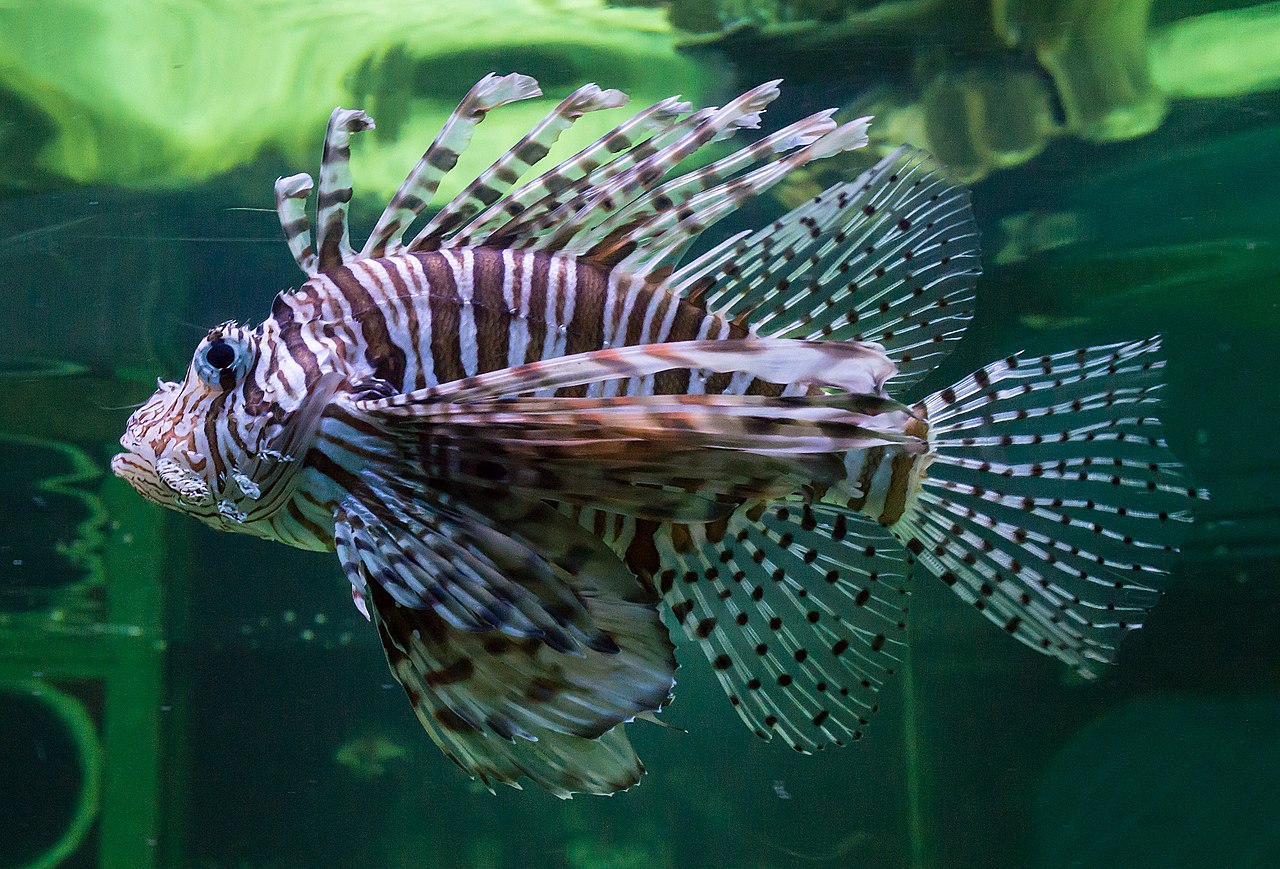
The most fragile species that share waters with Common Lionfish (Pterois volitans) in Georgia are among the most exposed to a negative impact.
An invasive species in many local glasses of water, Common Lionfish are among the invaders with almost no real predators.
This means Common Lionfish get to multiply rapidly without any type of real threat in their new habitat.
The only real threat to young Common Lionfish is adult Common Lionfish eating the young.
Crustaceans are among the most impacted when it comes to their presence.
High reproductive rates are also specific to this species. Male mates with multiple partners and a single female may lay up to a few thousand eggs at once.
8. Flathead Catfish

Flathead Catfish (Pylodictis olivaris) are invasive in Georgia and other nearby states.
This species is known for its omnivore eating habits which also include lowering several crayfish. Flathead Catfish eat all types of fish and crustaceans, similar to other invasive species here.
Small fish, insects, and water worms are all part of its diet.
They often live in areas with sandy bottoms but they tend to congregate in habitats with plenty of food. Flathead Catfish have also been shown to become cannibalistic when food resources are low.
Most fish of this invasive family are found in the deepest waters of a habitat. They don’t like to live in the area of the water with the highest current.
9. Coyote

Coyotes (Canis latrans) are seen in different colors depending on their region. They can have a gray or golden color, as in many other regions of North America.
This is a species that’s now expanding Southwards, given it has high adaptability.
Most spotted coyotes are never alone. They live in small packs, typically in a family where there’s a female who can reproduce.
Other coyotes that aren’t part of the family may also temporarily join their pack.
Coyotes can feed on small areas or in large areas. The largest area coyotes stick to when it comes to prey measures over 20 square miles.
10. Nine-banded Armadillo
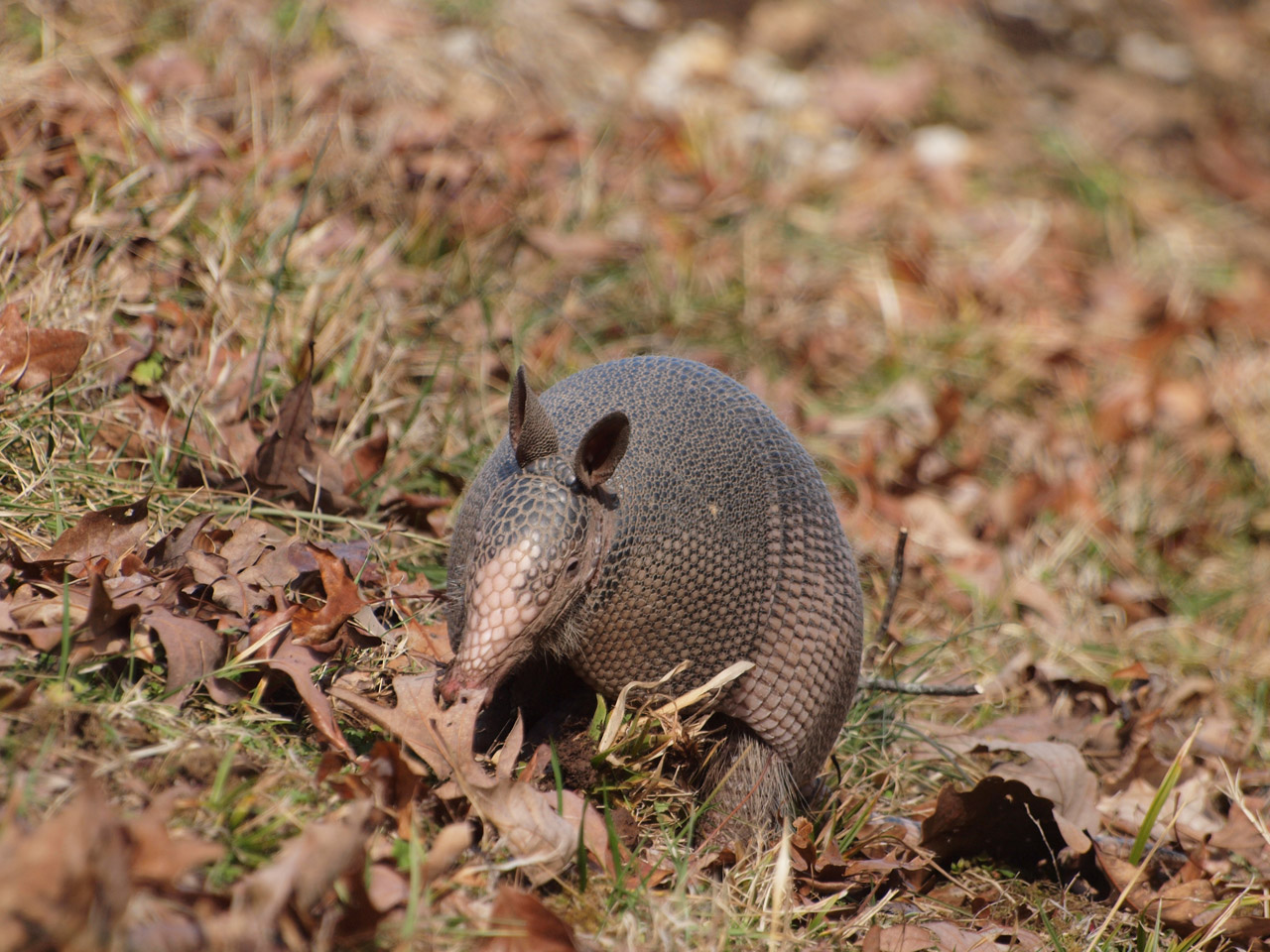
Armadillos are a common species in various areas such as dry scrubland. This is a species that has invaded North America from South America.
Unlike coyotes, Nine-banded Armadillos (Dasypus novemcinctus) are primarily solitary. These are nocturnal creatures that can jump but they prefer to hide away during the day and not engage with humans.
At night, None-banded Armadillos come out for food. Various insects including ants that can bite are part of their diet.
Centipedes, roaches, grasshoppers, and various types of beetles are also eaten by the species.
This species feeds by burrowing. Each armadillo maintains its burrows it returns to every night for food.
11. Wild Boar

Wild Boars (Sus scrofa) are some of the most common mammals in the world. Their presence in Georgia is seen as a potential risk.
An invasive species, Wild Boars are known to disturb the soils in their range. The foraging of the species coupled with soil disturbance leads to the appearance of different invasive plants.
One of the biggest issues with the species is that outcompetes local species for food. It eats more frequently which lives no food for local species.
A highly destructive feeding habit also sees these types of boars eating trees and local vegetation. Damages to these young plants are permanent, essentially killing them.
Wild Boars are often subject to systematic hunting aimed to eliminate or relocate them in other areas.
12. Asian Clam

High tolerance for habitat changes and fast sexual maturity make Asian Clams (Corbicula fluminea) an invasive species in the state.
While these claims have a short lifespan, they grow rapidly. The problem with this fast growth rate is the feeding habits of the species, mostly known for reducing available resources to native species such as Mountain Pea Clams.
The impact of this species on local clams is severe in rivers. Almost 70% of local clams are gone from the areas this species is introduced in.
This Southeast Asia clam spreads rapidly. Their larvae measure just microns and can spread rapidly in rivers and streams.
Multiple freshwater locations have already been confirmed for Asian Clams.
13. Charua Mussel

A lower number of plankton is among the main results of a higher Charua Mussels (Mytella charruana) presence in Georgia.
This is an accidentally introduced species in the Southeastern US habitats.
Charua Mussel is a suspension feeder which attaches itself to various types of surfaces. One of the biggest issues is that it can be found in the vital structure of mudflats and lagoons.
These mussels attach themselves to pipes, small boats, and docks. You may also notice them attached to the lower side of driftwood and other objects.
14. Asian Green Mussel

This invasive species (Perna viridis) is easily identifiable by its green coloring. As Charua Mussel, Asian Green Mussel attach themselves to hard surfaces.
They damage pipes in water as well as docks and other types of hard objects they live on.
Mussels of the species reach sexual maturity fast. Male and female mussels exist within the Asian Green Mussels which have fast-developing larvae emerging just hours after fertilization.
15. Island Applesnail

Small species and vegetation in water are mostly impacted by Island Applesnails (Pomacea insularum). These snails have established numbers across the state and in other nearby states.
You can identify the areas with Island Applesnails by their eggs which float on water or are attached to water vegetation. A white-to-pink color is specific to these eggs.
The adult snails are large, reaching a size of up to 6 inches.
Once adults, these snails feed on decaying algae.
16. Titan Acorn Barnacle
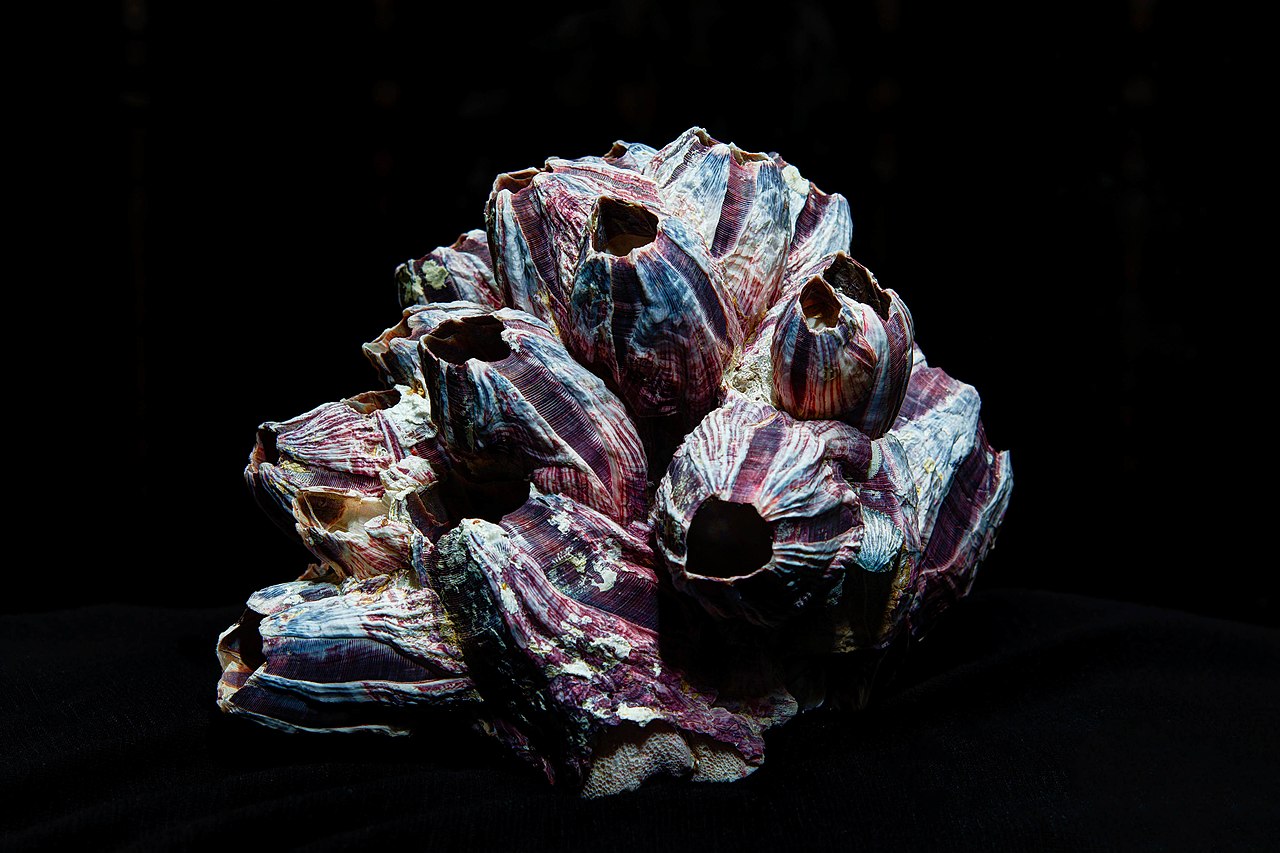
This type of arthropod (Megabalanus coccopoma) is native to tropical regions of the world. Its expansive invasive range changes the aquatic ecosystem, especially through the reduction of food resources for other suspension feeders.
These are some of the largest suspension feeders in Georgia and Southeastern states.
An increased body size means Titan Acorn Barnacles are also spacing out other suspension feeders apart from lowering available food.
With sufficient food, this type of barnacle can grow hundreds of times larger than local species.
17. Green Porcelain Crab
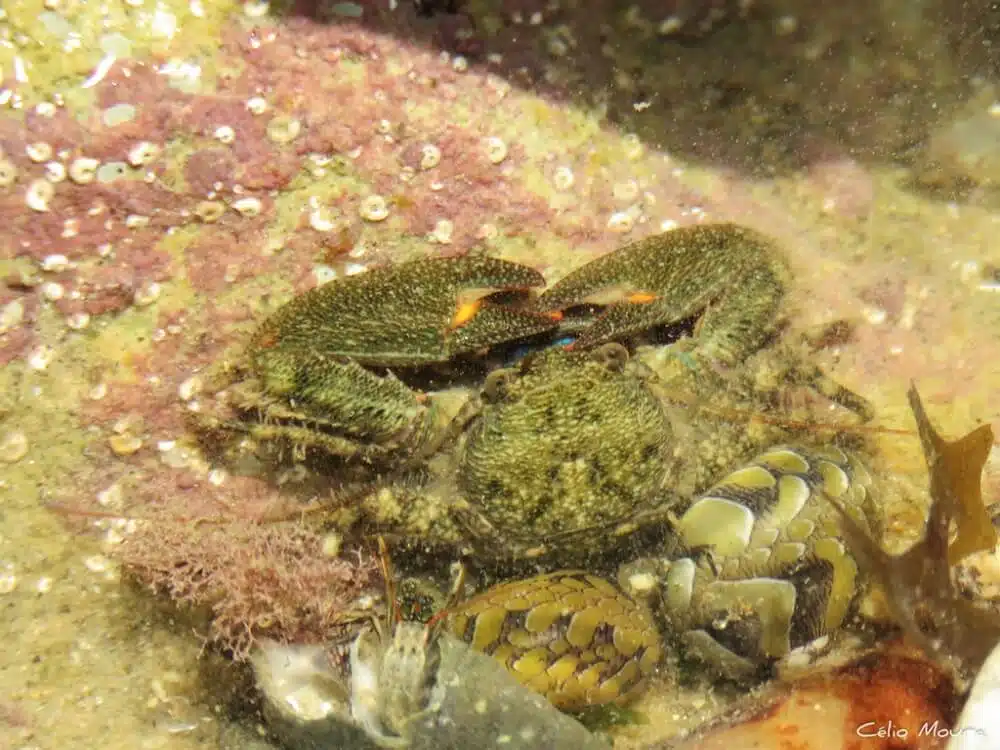
Believed to be of Brazilian origin, this type of green crab (Petrolisthes armatus) is found in the marine areas of Southeaster US territories.
The species feeds on Zooplankton as a filter feeder. It reduces available food to local suspension feeders.
Green Porcelain Crabs are also found close to other species which feed on almost motionless organisms.
It can often be spotted next to sponges as it awaits food to pass through sponges and be carried over to them.
Green Porcelain Crabs are also found on the seabed feeding on dead animals.
18. Hemlock Woolly Adelgid

Northern parts of Georgia represent the Southern limit of the Hemlock Wooly Adelgid (Adelges tsugae).
This is a type of invasive insect in North America with an impact on Eastern Hemlock.
It feeds on the tree in an expansive range from Virginia to Georgia. Hemlocks are partially or fully impacted by invasive species.
This wooly adelgid inserts its mouthparts to suck the stored nutrients of the host.
Various management techniques such as quarantine have been used against the species.
Pesticides are also used against Hemlock Wooly Adelgids. They can be used on a specific tree in the case of early detection or on entire forested areas.
Efforts to introduce various natural biocontrol agents and predators have been put into place. Sasajiscymnus tsugae is a type of bug that eats Hemlock Wooly Adelgids.
19. Light Brown Apple Moth Caterpillar
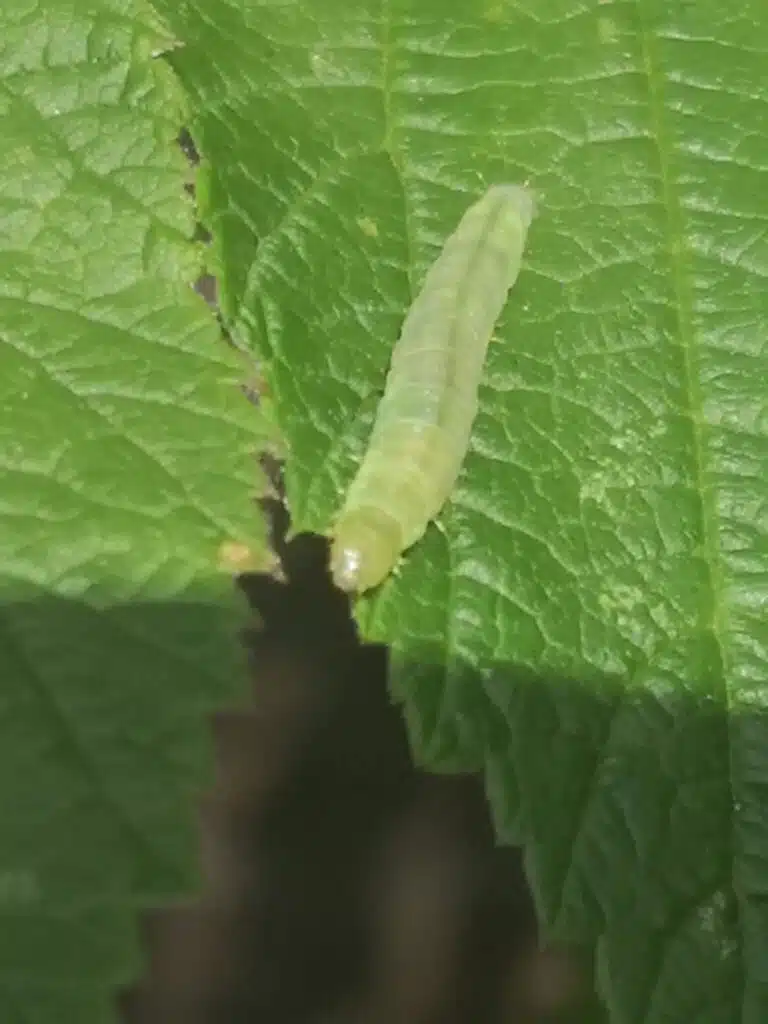
Light Brown Apple Moth Caterpillars (Epiphyas postvittana) are an invasive species of apple trees. This is one of the main species that invades apple trees 2 times per year.
The largest impact on trees is seen in the period from early September to Early October.
This is also the picking time for many types of apples.
Unlike other types of apple pests, Light Brown Apple Moth Caterpillars feed both on fruit tree leaves and apples.
The impact on apples is superficial but still sufficient to make apples unfit for commercial use.
Caterpillars of this family have a beneficial effect in other regions of the US as it feeds and kills invasive plants such as gorse.
20. Gypsy Moth

Gypsy Moths (Lymantria dispar) are seen as one of the most important alien invasive species in the world, also present in Georgia.
There are at least 100 types of trees and shrubs the caterpillars of the species feeds on.
It likes the leaves of hardwood trees such as oak and birch but it also feeds on fruit trees such as apple trees.
Some of the first signs of the caterpillars include spotting the adults around these trees.
Adult male moths have yellow-brown and black coloring while females are mostly white with brown contrasting marks on the wings.
The fact eggs are laid by females on many trees without a specific host makes the species even more difficult to control.
21. Red Imported Fire Ant

Considerable impact on livestock and wildlife is specific to the Red Imported Fire Ant (Solenopsis invicta). This is one of the species which is seen among the first few hundred most invasive in the world, together with Gypsy Moths.
Red Imported Fire Ants are believed to have adapted to disturbed habitats around human settlements.
They are even known as expert invasive species in disturbed areas.
Living underground, these types of ants may also be found around homes.
They can nest under homes, driveways, and sidewalks. Very large Red Imported Fire Ant colonies excavate a lot of soil under these structures.
It results in considerable structural damage to buildings.
22. Redbay Ambrosia Beetle

This type of beetle (Xyleborus glabratus) has been introduced to North America from Southeast Asia.
Identification is based on its black elongated body and its light brown contrasting legs.
A heavy impact on trees and fruits is specific to this species.
Redbay Ambrosia Beetles impact redbay and avocado the most.
Damages caused by Redbay Ambrosia Beetles are difficult to mitigate. While males don’t have wings, it’s the females that quickly disperse and spread disease to host shrubs and trees.
Redbay Ambrosia Beetles spread a fungus that kills infested trees quickly.
Invasive Plants of Georgia
The following plants have been purposefully or accidentally introduced to the state.
23. Tree of Heaven

Tree of Heaven (Ailanthus altissima) is a species of invasive tree with a rapid spread across North America and Georgia.
It’s considered a noxious weed with deep roots that are difficult to kill and completely excavate.
Furthermore, this invasive tree also attracts invasive bugs, which is also detrimental to the local ecosystem.
Spotted Lanterflies are among the invasive species that use Tree of Heaven as hosts.
One of the biggest problems of this tree which isn’t the longest-living species in Georgia is its ability to clone or multiply itself on its own.
This suckering capacity means complete species elimination is now difficult.
You can find this tree in areas of the state with full sunlight and moist soil.
24. Mimosa

Mimosa (Albizia julibrissin) can be one of the most beautiful flowers in gardens. It grows taller than other species.
This is also a major reason for concern as it has an umbrella-like canopy that shades all other shorter plants around it.
Mimosa is also known for quicker multiplication compared to other plants.
Each seed pod of these flowers comes with up to 12 seeds. These seed pods can survive for years which means the plant can re-grow even years after death.
Removing the plant completely with its roots and clearing its area from seeds is recommended for keeping it resurfacing.
You need to clear the seeds off the ground with industrial vacuums so that mimosa doesn’t start growing again in the area you cut an old tree from.
25. Garlic Mustard

One of the biennial invasive species in Georgia is Garlic Mustard (Alliaria petiolata). This is a specific type of plant that grows up to 3 feet and which initially looks harmless.
However, there aren’t too many species interested in eating the plant which means it tends to thrive in other areas where plants are eaten by animals and bugs.
A very high multiplication rate further makes this species invasive.
It’s estimated more than 60.000 Garlic Mustard seeds spread out in its vicinity in an area of only a few square feet.
26. Brazilian Elodea
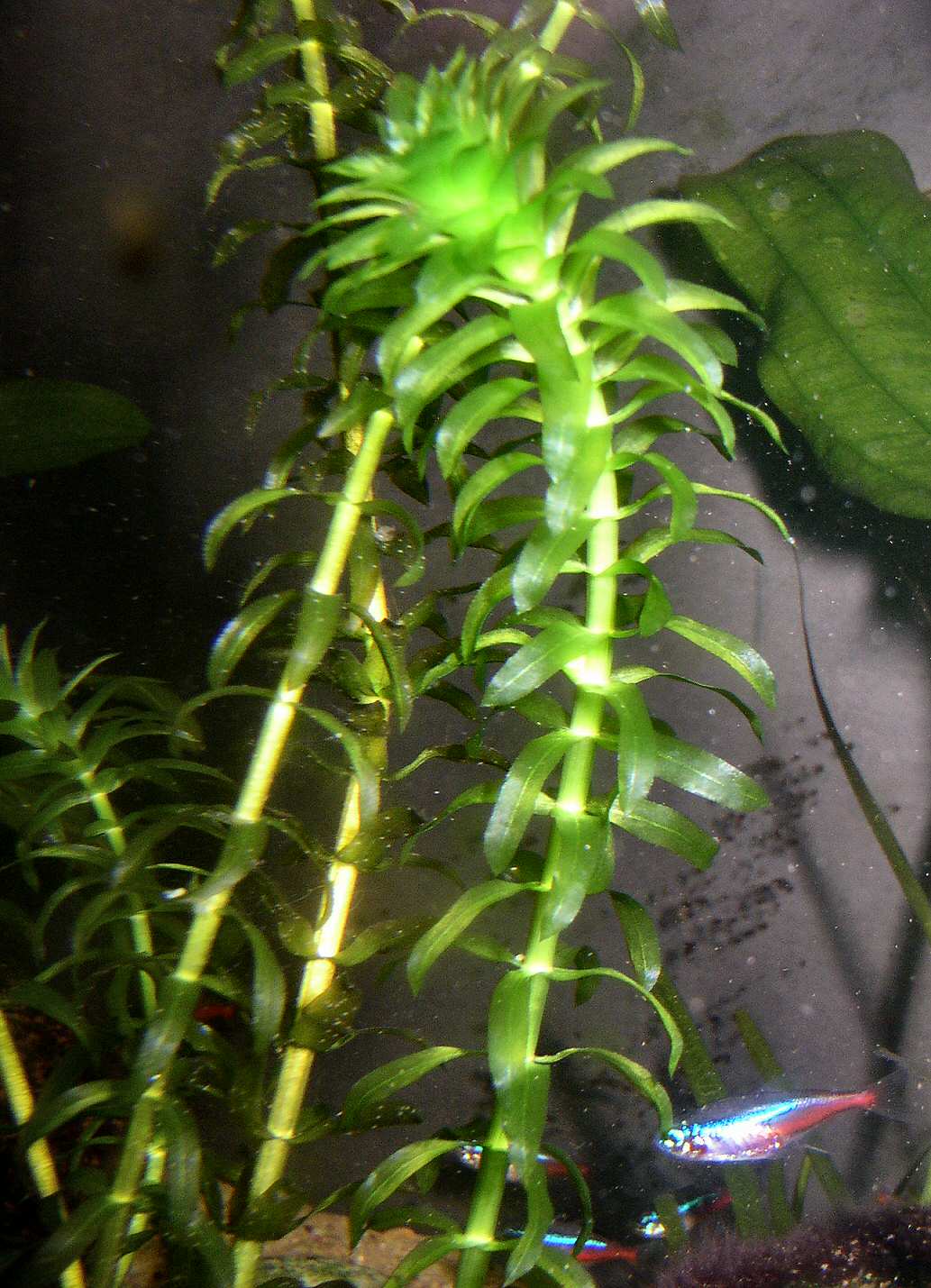
Brazilian Elodea (Egeria densa) used to be one of the most common imported aquarium plants.
This species has a green appearance and it grows up to a size of a few feet. It has a column-like shape and it was used to decorate aquariums as well as garden ponds.
Its thick canopy overgrows other plants easily. It does it by blocking natural light reaching lower depths which means most shorter plants than Brazilian Elodea in its range eventually die.
Low light may kill plants in their invaded habitat if left unmanaged. One of the issues with management techniques is they also kill local plants.
Herbicides are one of the most common solutions against the Brazilian Elodea.
27. Common Water Hyacinth

The Common Water Hyacinth (Eichhornia crassipes) is a long species with surface-level flowers and in-water roots.
Growing quickly, Common Water Hyacinth slowly takes over the entire area it has been introduced. It blocks paths in canals, ponds, and lakes.
The highest risks when it comes to introducing the species in other areas of the state are based on having multiple access routes for boats and fishing.
Aquatic plants of this genus reduce natural sunlight that keeps other native plants alive.
Common Water Hyacinth absorb various types of metals and minerals water carries along during their lifespan.
These plants die and fall to the bottom of the water when they start to release these metals back into the water.
A natural process, the death of the Common Water Hyacinth triggers a pollution-like reaction for the plants in its vicinity.
28. Autumn Olive

An invasive species undergoing naturalization, the Autumn Olive (Elaeagnus umbellata) is also known as The Japanese silverberry.
Initially introduced as a decorative species, this noxious weed becomes difficult to control afterward.
It has rapid germination which puts it in front of other species and which allows it to be larger, and stronger, with deeper roots in periods of drought.
AutumnOlive can also have a beneficial effect on nearby plants, particularly for those in low-nitrogen soils.
Balancing nitrogen levels in the soil, Autumn Olive can increase fruit and flower production for the plants in its immediate vicinity. However, the benefits are small to be adopted on a large scale.
29. Common Ivy

Common Ivy (Hedera helix) has been introduced to Georgia and North America from Europe and Asia.
This is a species that has distinct leaves and a potent climbing ability reaching heights of up to tens of feet.
One of the ways this species is invasive is by using nearby trees for climbing.
Young trees are the most at risk when it comes to their potential impact.
It climbs and covers the canopy of young trees. These young trees give away under the pressure of the invasive species.
Even older trees can suffer and even be killed by this plant. It covers the canopy and blocks direct sunlight from reaching the leaves of the host.
Common Ivy is mostly present in inhabited areas as it has been introduced to decorate homes and gardens.
30. Hydrilla
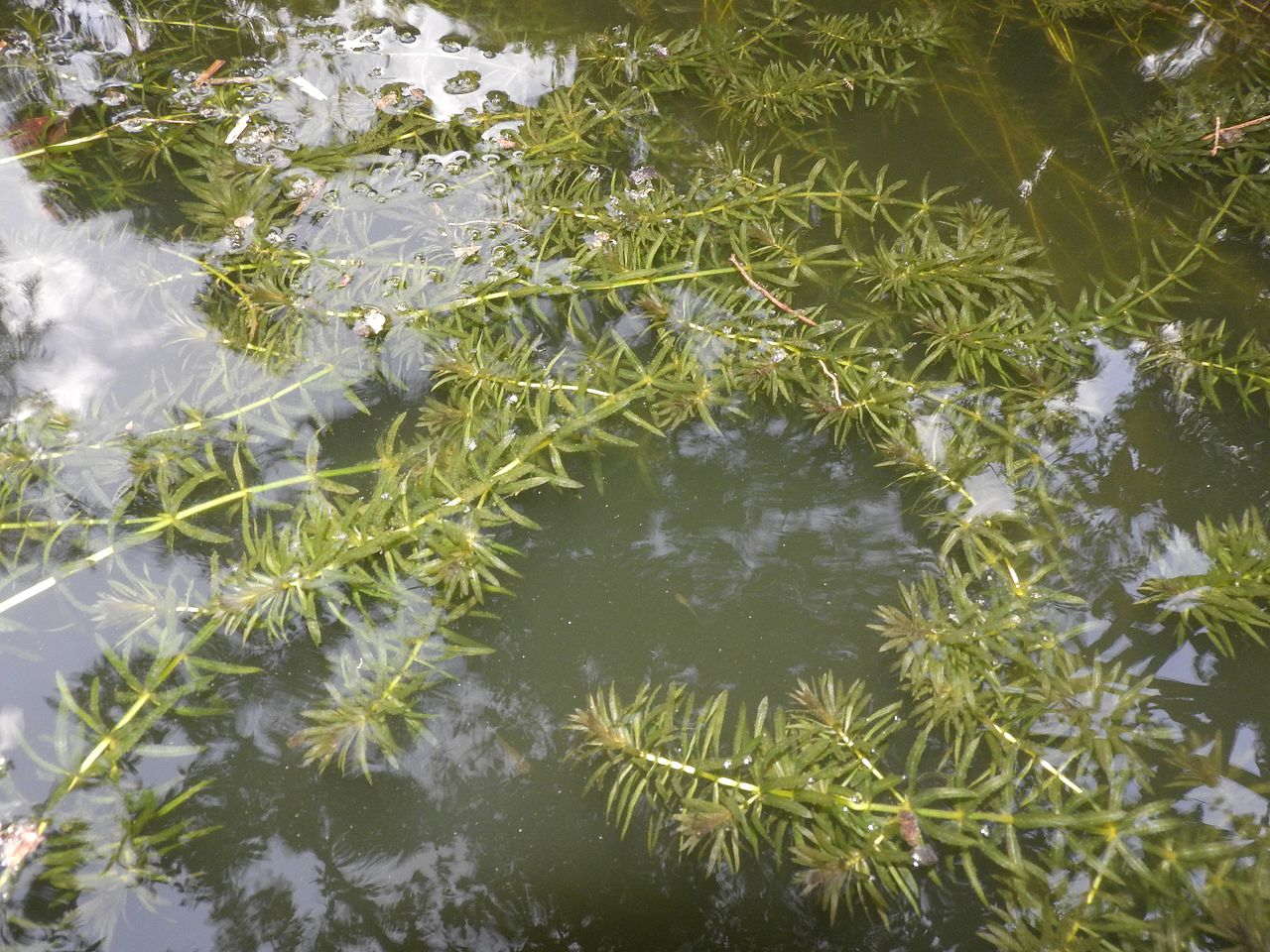
Hydrilla (Hydrilla verticillata) is one of the invasive species that has made its way to the state of Florida.
The highest numbers of Hydrilla are found in the wetlands of Florida but the invasive plant is having growing numbers in Georgia.
It grows in the water where it can control the biodiversity of an area through the rapid spread and by blocking direct sunlight to other smaller plants.
The plant’s impact on the ecosystem is so important that a species herbicide has been formulated to kill it and clear waters.
However, Hydrilla is a species that may not respond to herbicides. A new type of plant appears which is a type of resistant hybrid-Hydrilla that cannot be killed by the herbicide.
31. Dwarf Hygrophila

A rapid spreader, Dwarf Hygrophila (Hygrophila polysperma) is among the species that quickly grow new shoots.
This species has initially been used to decorate aquariums and ponds.
It has been introduced to North America as a decorative plant where it maintains an invasive status. Some areas outside Georgia already see this plant naturalize into a nuisance.
While useful for aquariums, Dwarf Hygrophila can overgrow ponds and lakes.
Outside of the state, this species might be used in traditional medicine.
32. Cogongrass

This type of tall grass (Imperata cylindrica) is a common invasive species in Georgia and the Southeast.
Apart from adding little value to the environment, the species hasn’t been successful in preventing soil erosion.
Cogongrass is among the species that grow tall and overgrows an area. Due to its bad taste, livestock keeps away from it.
Rapid multiplication based on high amounts of seed spread with the wind makes the species quickly cover a given area.
Multiple control techniques have been tried and tested after its initial introduction to the Southeast. There’s little evidence to show these methods have eliminated it from the area.
Herbicides may be used against It, but with mixed results.
33. Japanese Honeysuckle

Similar to English Ivy, Japanese Honeysuckle (Lonicera japonica) is among the species which can climb tall distances.
Some of the largest Japanese Honeysuckle plants can climb up to 33 feet.
They can cover homes, fences, and trees. This is a species that can block natural light from reaching trees, grass, and other types of plants it overgrows.
Like other plants in Georgia, Japanese Honeysuckle has also been introduced to control soil erosion in areas without plants and as forage.
These attempts have been unsuccessful as this plant doesn’t prevent soil erosion.
It can’t even grow to its maximum size in eroded soils as it prefers to live in disturbed soil, close to humans.
34. Creeping Water Primrose

Creeping Water Primose (Ludwigia peploides) is a green plant with yellow flowers. It has a noxious weed status in all areas it is established in.
This is one of the species that block waterways and stop boats from moving forward.
The weed also makes water move slower and it reduces the number of fish in its vicinity. This makes it an ideal place for mosquitoes to lay eggs.
Some areas of the world eliminate this plant as it favors the appearance of The West Nile virus with mosquitoes and mosquito eggs.
Known for its very small 1mm seeds, this plant can easily multiply as these seeds are carried along. It grows in clusters of up to 6 plants and flowers.
35. Japanese Climbing Fern

Japanese Climbing Fern (Lygodium japonicum) is one of the most widespread types of climbing plants of invasive status in the state.
This species is even banned in certain parts of the world such as Europe as it may become almost impossible to eliminate.
A moist habitat and climbing options are mandatory for the Japanese Climbing Fern.
Tall trees, homes, and tall fences are ideal places for it to climb. This species can even climb tens of feet.
By doing so, the Japanese Climbing Fern can overgrow tall trees and it can kill them by stopping photosynthesis.
36. Nepalese Browntop

Nepalese Browntop (Microstegium vimineum) is a type of annual plant that grows in dry, moist, and undisturbed land.
Unlike other types of invasive plants, Nepalese Browntop is a species that can be removed and the soil can be regenerated.
Otherwise, it overgrows and kills local flowering plants and other short plants. Since it doesn’t need too much light, this is a species that can also cover woodlands, limiting plant biodiversity.,
Regions with Nepalese Browntop grass are also known to have a reduced number of natural bugs and insects as the grass isn’t eaten by as many species.
However, ticks are found in high numbers in areas with Nepalese Browntops.
37. Marsh Dewflower
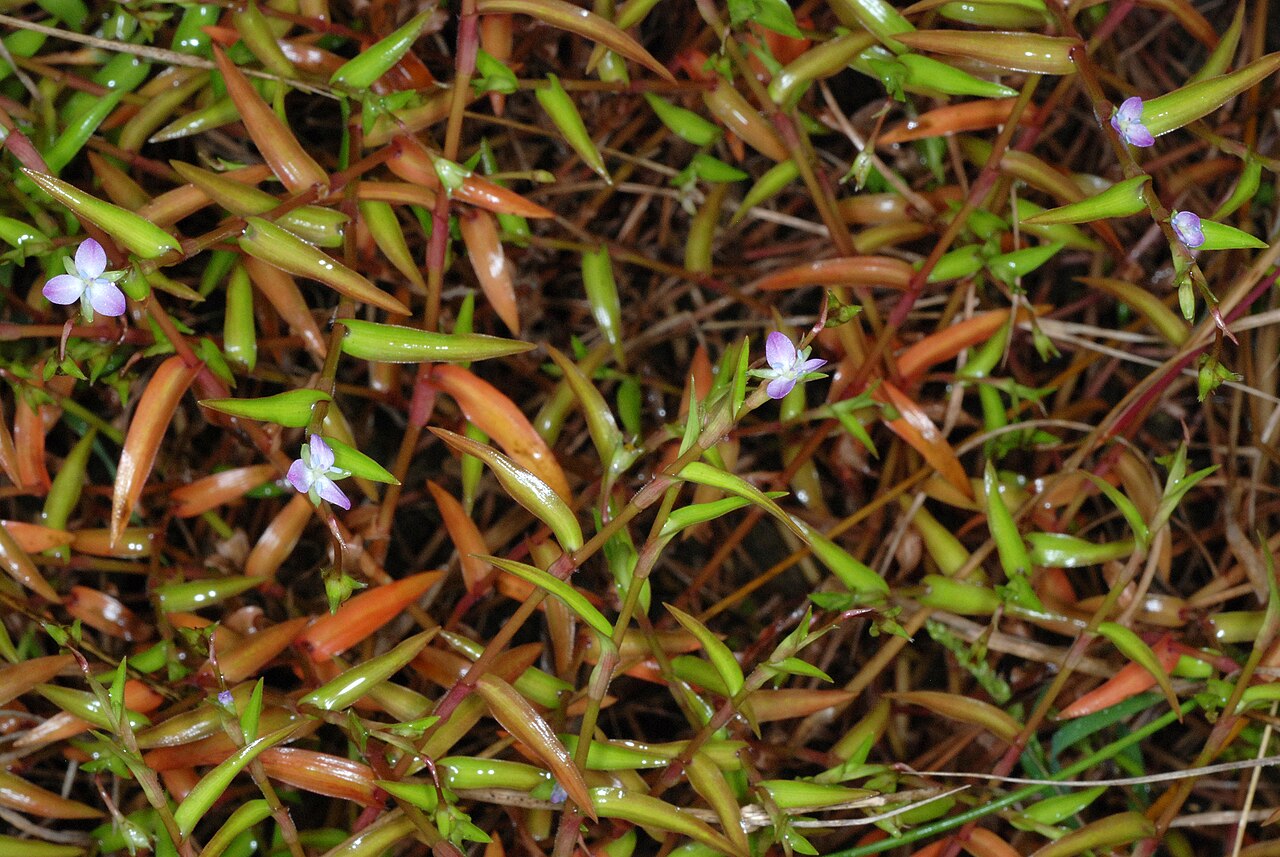
Marsh Dewflowers (Murdannia keisak) is a type of green aquatic plant that grows in shallow waters.
It can be found on the edges of lakes and ponds as well as on the edges of streams, on occasion.
This species looks like tall green grass but it also has white to pink flowers.
Rapid spread limits the resources other plants need to survive when also growing on the edges of water sources.
A short to medium-sized species, Marsh Dewflower grows to a maximum size of up to 18 inches and it represents a species smaller plants cannot overgrow.
Known for having tens of stems, Marsh Dewflowers also overgrow native plants by growing in clusters.
38. Eurasian Watermilfoil

This species of aquatic plants (Myriophyllum spicatum) spread through the state by boats. Eurasian Watermilfoil spread through shoots which means it can be transported to a new lake or a new stream by boat.
Growing from stems, this species has very rapid spread rates. It can overcrowd water and create a type of mat-like structure with no light and nutrients for other species.
Even fish can feel overcrowded in areas with Eurasian Watermilfoil which makes them seek new waters.
This species can be controlled by washing boats and all other elements that have come in contact with it, such as anchors.
You can clean boats before moving them to a new area of the state to stop the spread.
This species has driven out almost half of the native plants in the areas it has established in.
39. Variable Leaf Milfoil
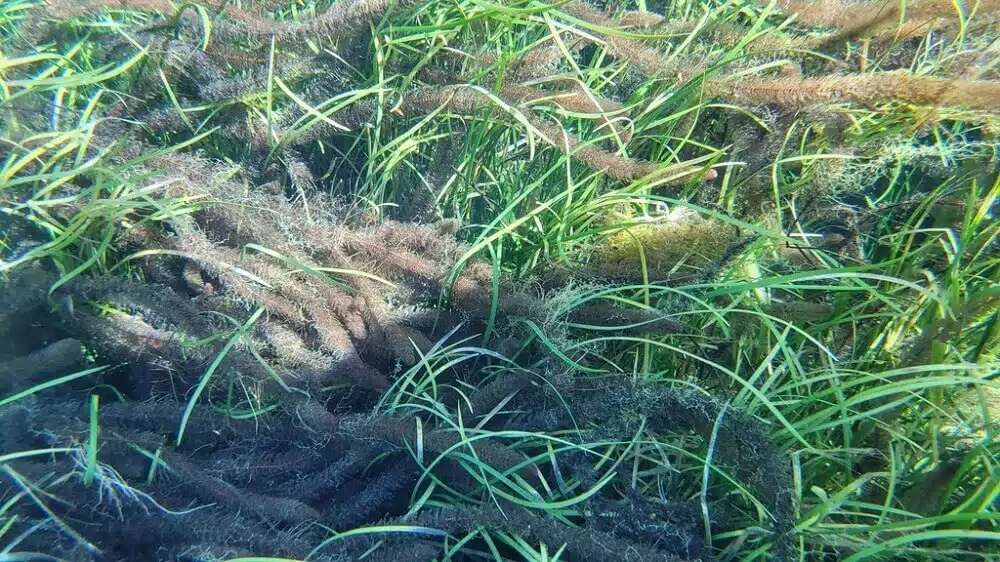
Variable Leaf Milfoil (Myriophylium heterophyllum) is one of the species which has been introduced to North America.
Identification is based on its elongated green shape with feather-like leaves.
An aquatic species, Variable Leaf Milfoil is a species that can be controlled.
Multiple management techniques have been employed against it. For example, this species is controllable through herbicides.
The introduction of grass carp is also a good method in areas where herbicides cannot be safely used.
Pulling these plants by hand is possible when it grows in ponds. Extracting it mechanically is among the safest ways of eliminating the plant.
40. Small Broomrape

Small Broomrape plants (Orobanche minor) show parasitic traits and are easy to spot on their host plants.
A parasite plant such as the Small Broomrape is a species that feeds on the host plant sucking its nutrients.
You can find Small Broomrape in different colors such as green or brown across the state.
It inhabits the same dry areas such as prairies where plants such as pea family species grow. This species is also a parasite of the multiple types of asters growing in Georgia.
While it grows in a vast range, this species has a sporadic appearance as it doesn’t overgrow an area.
41. Princesstree

This type of Paulownia (Paulownia tomentosa) is a fast-growing tree of Asian origin.
It has an invasive status in Georgia where it overgrows local vegetation fast. Princestrees multiply by suckering.
These trees clone themselves indefinitely. New sprouts need to be eliminated from the ground for the tree not to multiply itself.
This species of fast-growing trees can grow taller than many local trees, but only with sufficient moisture. Otherwise, the tree remains small.
While a small tree if not watered frequently, Princesstrees can grow in very difficult conditions, albeit poorly.
42. Sand Pine

Sand Pines (Pinus clausa) are highly common in Florida and slightly less common in Georgia.
This species is known for establishing itself outside its cultivation areas such as gardens.
It can grow in sandy soil or very dry soil where other trees and other types of vegetation cannot survive.
Sand Pines are elegant tall trees typically grown singularly on lawns or in the backyard.
It can establish itself in some of the driest areas of the state. Falling needles make it a less common type of pine tree in parks and gardens as opposed to other types of pine.
43. Water Lettuce

Water Lettuce (Pistia stratiotes) is an invasive species in the dirty waters of Georgia.
Named after its appearance that resembles lettuce, this is an aquatic species that blocks natural light in the water.
It has also been shown to be one of the favorite species of mosquitoes which use them to lay eggs.
Water Lettuce is also among the most important invasive aquatic plants with very large leaves. Its green leaves can be as small as 2 inches but they can also grow to a maximum length of 7 inches.
This aquatic plant first establishes itself in areas with human waste, such as near water treatment plants. Eliminating it requires eliminating human waste from water together with strong fertilizers which may also end up in public water.
44. Kudzu

Kudzu (Pueraria montana) is one of the fastest-growing invasive climbing plants in the state.
This species grows at least 60 feet per year. It covers trees, walls, fences, homes, rocks, and different other types of structures.
In turn, this leads to poor light penetration and the death of other types of vegetation below.
It can also spread on trees with a high chance of killing the youngest trees.
There’s no clear solution against these invasive plants but the introduction of certain funguses can prove to be a biological control method.
45. Multiflora Rose

Multiflora Rose (Rosa multiflora) is a type of decorative flower that has been introduced to North America to make gardens more appealing.
This was also one of the species that grow at the borders of a site or of a parcel as a natural barrier against animals or between properties.
A proven invasive species today, Multiflora Rose or Rambler Rose is a species that cannot be simply cut for elimination.
Its roots also need to be removed as they can sprout back within a season if their roots are left in the ground.
46. Common Salvinia

Found in shallow water or around lakes and ponds, Common Salvinia (Salvinia minima) is a small invasive plant.
It spreads quickly leaving no room for proper plant biodiversity.
The species has been introduced from Florida. It’s believed boats and ships carried this species to the country where it spread along the Eastern and Southeastern states.
47. Giant Salvinia

This species (Salvinia molesta) has been introduced to North America from South America.
It used to be sold in pet stores as a decorative plant for aquariums before escaping and making its way to water sources.
Its invasive status is seen through a lowering of water oxygen levels and poor light penetration.
Multiple natural control methods have bene established against it, including importing the salvinia weevil, a bug that feeds on Giant Salvinia.
48. Chinese Tallow

Chinese Tallow (Sapium sebiferum) is imported to North America as a decorative tree species.
It’s only seen as an invasive species in Southeastern habitats such as in Georgia. This is a species that creates monocultures.
It spreads rapidly and it kills or limits the diversity of local trees and shrubs.
49. Tropical Soda Apple

Pastures are among the preferred habitats of this species (Solanum viarum). Citrus groves in Florida and Georgia are also impacted by this species.
Like most invasive species, Tropical Soda Apple plants reduce natural biodiversity in the areas they establish in.
This is a species without any known biological control agents outside The Tropical Soda Apple Beetle.
50. Japanese Wisteria

Japanese Wisteria (Wisteria floribunda) can be one of the most beautiful types of trees with elongated flowers.
This species has some of the most fragrant flowers among all wisteria species. A large canopy limits the amount of vegetation or flowers that can grow under this tree. Deep roots also make it difficult to remove.
51. Chinese Wisteria

Chinese Wisteria (Wisteria sinensis) is a similar species with an invasive status in Georgia’s regions that resemble those of its native China.
This species limits local biodiversity through its size and rapid multiplication.
Chinese Wisteria has a very large canopy and it may be mistaken for Japanese Wisteria with its purple flowers.
52. Giant Cutgrass
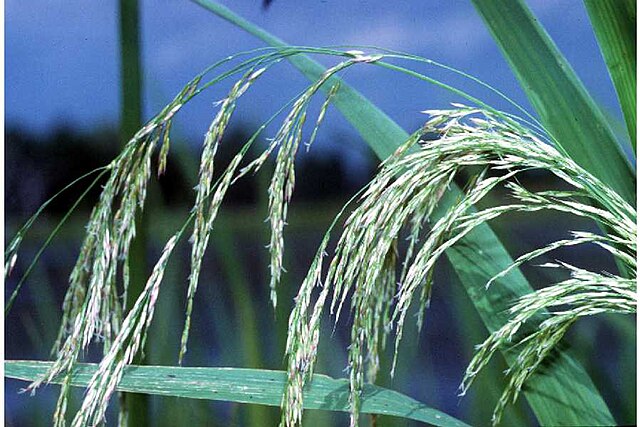
A common sight in marshes and around water, Giant Cutgrass (Zizaniopsis miliacea) is a species that limits the growth of local plants.
It grows in still shallow water or moist soil next to lakes and ponds. Left unmanaged, it creates walls of grass at least a few feet tall.
53. Sericea Lespedeza

Sericea is an invasive plant of the pea family. It (Lespedeza cuneata) originates in Asia and Australia and it has a widespread Georgian distribution.
It grows almost anywhere trees grow. It can inhibit new tree growth and it also reduces the diversity of local plants and shrubs.
54. Chinese Privet

Chinese Privet (Ligustrum sinense) is an invasive plant that outcompetes local plants for nutrients.
Unlike local shrubs and plants, Chinese Privets grow to a more tree-like structure which allows them to become stronger than local plants.
Initially introduced for natural hedges, Chinese Privet is expensive to excavate on a large scale.
55. Asian Marshweed

Asian Marshweeds (Limnophila sessiliflora) are seen in shallow water along lakes and ponds. These plants grow partly in the water but they have different types of leaves outside of water.
This species limits the diversity of local plants. It grows up to a size of 16 inches also limiting the amount of light that penetrates the water and reaches other aquatic plants.
Asian Marshweed is also invasive in other parts of the world, particularly in rice fields.